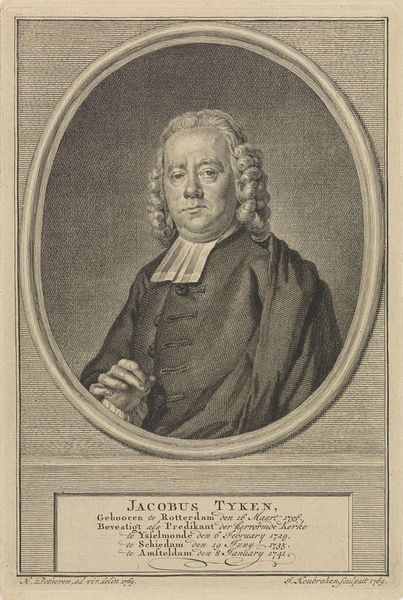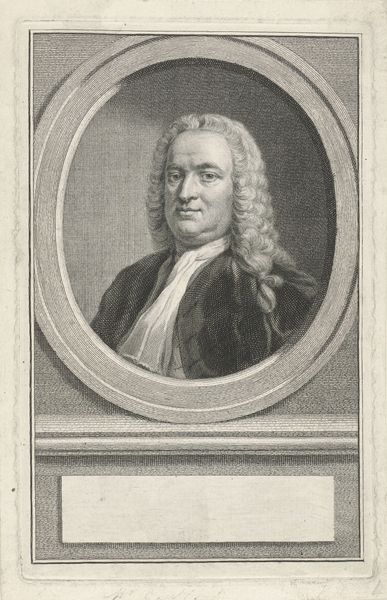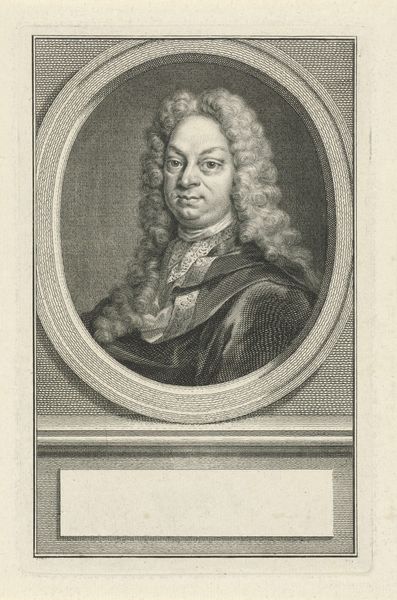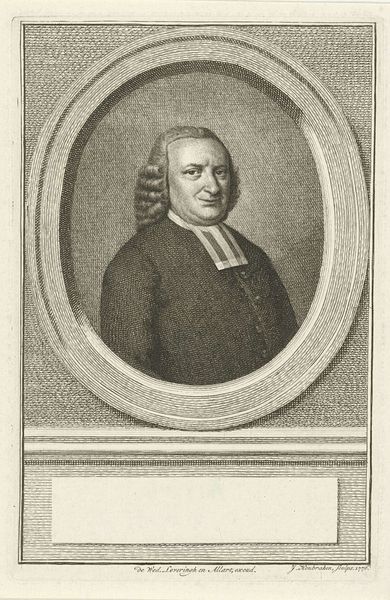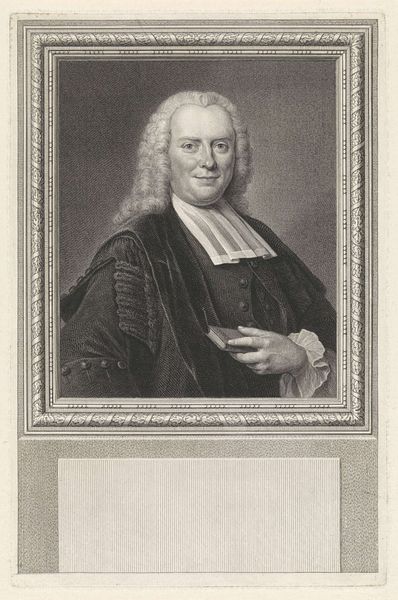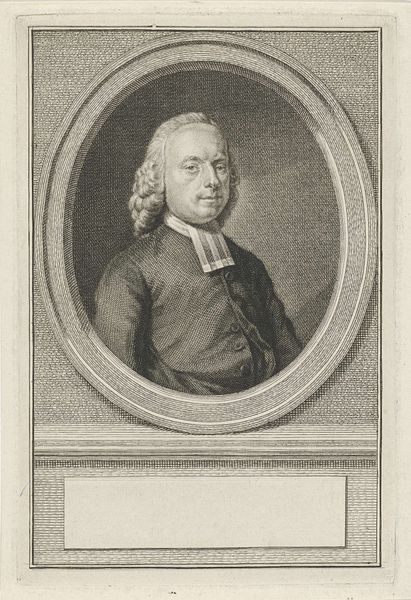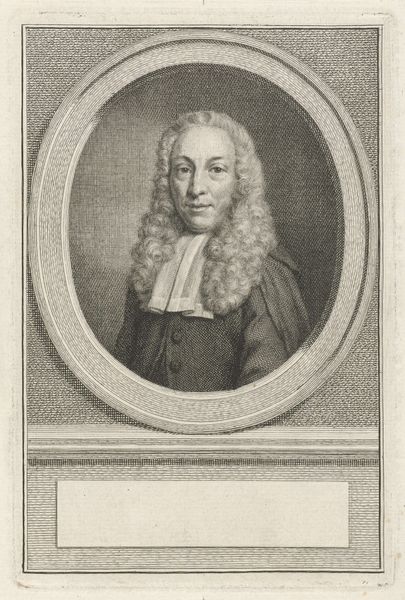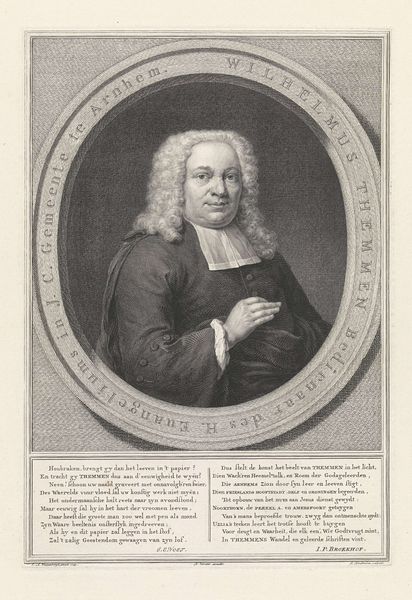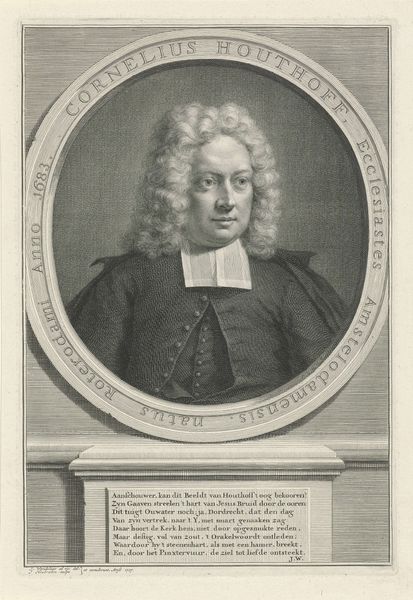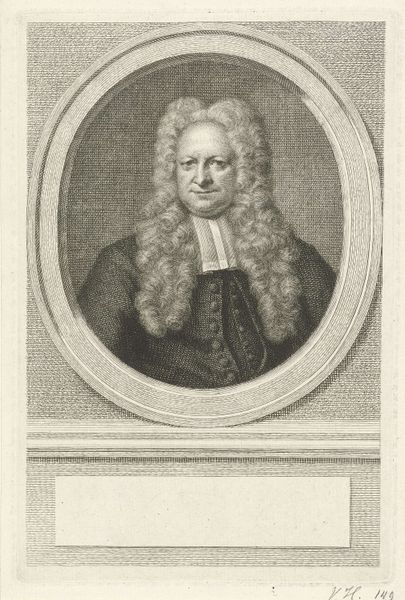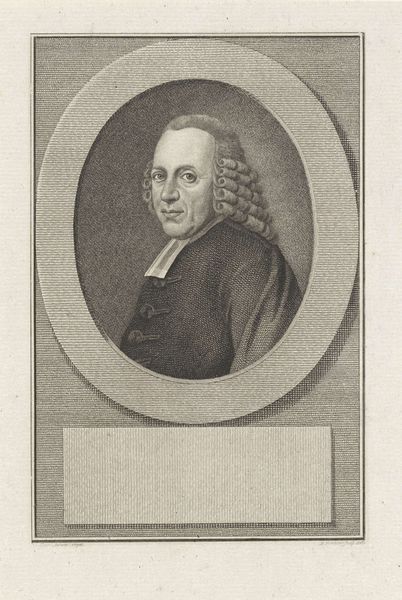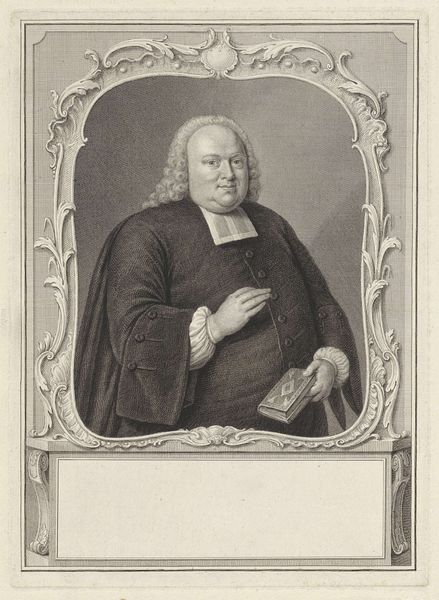
Dimensions: height 171 mm, width 118 mm
Copyright: Rijks Museum: Open Domain
Curator: Here we have Jacob Houbraken’s “Portrait of Rutger Schutte,” an engraving from around 1775. Editor: This rendering seems pretty straightforward. The detail is remarkable, but the man depicted seems… well, fairly unremarkable. What makes this piece worthy of display, worthy of our attention? Curator: While it’s a portrait of an individual, consider the engraving itself. How does the context of its production and consumption elevate its meaning beyond just a likeness? Think about print culture in the 18th century. Editor: Ah, right. This wasn't mass-produced photography. This was meticulously created to be distributed, possibly as an illustration for a book or a widely available individual print? Curator: Precisely. Houbraken was a renowned portrait engraver. These engravings circulated widely, shaping public perception of figures like Schutte. The blank space below the portrait was designed for text. How might such elements contribute to Schutte’s legacy and social standing? Editor: So, the portrait elevates Schutte’s position through representation and association? In addition to immortalizing him it also reinforces social hierarchies through the medium itself? Curator: Yes. These images served to solidify the subject’s place in society. This engraving isn't just *of* someone; it actively *does* something, by propagating ideas about status and authority. What have you gleaned from this approach? Editor: I’d been quick to overlook the function of the artwork and jumped right to assessing aesthetics, rather than appreciating what this image achieved in its day.
Comments
No comments
Be the first to comment and join the conversation on the ultimate creative platform.

